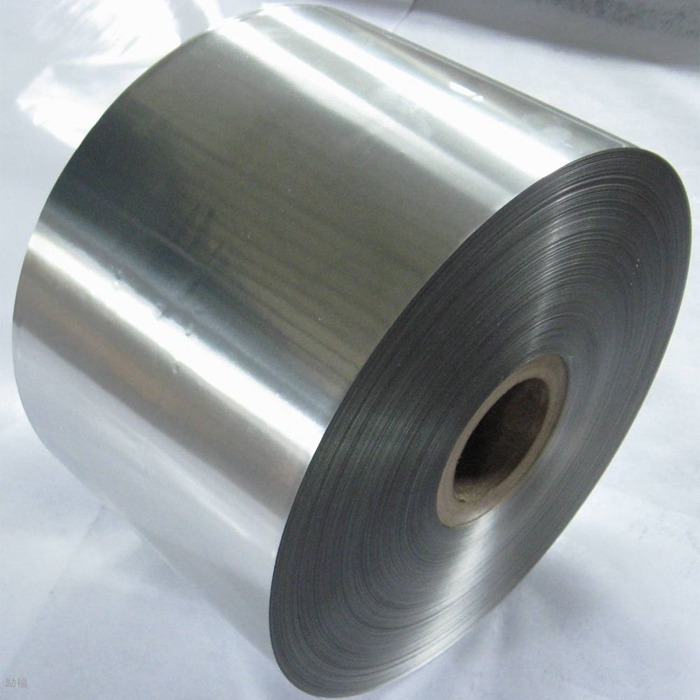6 Micron Aluminium Foil for Flexible Packaging

Aluminium foil is widely used in flexible packaging applications due to its excellent barrier properties, lightweight, durability, and sustainability. Within the aluminium foil industry, 6 micron foil is becoming increasingly popular for flexible packaging as it offers a good balance of barrier performance and cost effectiveness. This article will discuss the characteristics and uses of 6 micron aluminium foil for flexible packaging.
What is 6 Micron Aluminium Foil?
Aluminum foil is produced in a variety of thickness grades depending on the intended application. Generally speaking, thinner foils provide better barrier properties while thicker foils are more durable. 6 Micron Aluminium Foil refers to aluminum foil that has a thickness of 6 millionths of a meter, or 0.000006 meters. To put this thickness into perspective, a single sheet of 6 micron Alu foil is less than the thickness of a human hair.
Despite its ultra-thinness, 6 micron Aluminum foil maintains strong barrier qualities thanks to aluminum’s inherent properties. Aluminum is non-porous and forms a tightly adhered protective oxide skin, making it highly effective at blocking gases, moisture, light, and flavors from permeating the foil layer. At the same time, 6 micron foil aluminium is thinner and lighter than standard household cooking foil, which is commonly between 8-12 microns thick. This makes 6 micron well-suited for flexible packaging uses where barrier performance and material efficiency are important factors.
Barrier Properties of 6 Micron Aluminum Foil
One of the key advantages of using 6 micron aluminium foil is its superior barrier qualities. Aluminum foil’s barrier capabilities stem from the following qualities:
Gas Barrier – Aluminum foil forms an excellent barrier against gases like oxygen, carbon dioxide, nitrogen, and ethylene which can negatively impact food quality and freshness over time. This allows products wrapped in foil to maintain their sensory and organoleptic properties longer.
Moisture Barrier – Aluminum foil is highly impermeable to moisture in both liquid and vapor forms. It protects products from absorbing external moisture or losing internal moisture content.
Light Barrier – Aluminum reflects over 90% of visible light spectrum, protecting light-sensitive products from degradation from UV rays. This shelf-life extending quality is enhanced with 6 micron foil’s increased surface area to thickness ratio versus thicker foils.
Grease/Fat Barrier – Aluminum foil creates an effective barrier against penetration by oils and greases. This prevents flavor transfer between wrapped foods and protects electronic components from exposure to oils and greasy residues.
Odor Barrier – Aluminum inhibits transmission of odors both into and out of the packaging due to its low permeability. This barrier effect is maximized with ultra-thin 6 micron foil.
Hermetic Seal – When a properly crimped or sealed, aluminum foil forms an inert hermetic barrier impermeable to external elements. The high modulus of elasticity exhibited by 6 micron foil allows it to readily conform tightly to product contours during automated packaging processes.
These outstanding barrier qualities allow 6 micron foil to extend shelf life, preserve quality attributes, and provide brand protection for a wide range of sensitive packaged goods. Aluminum foil’s barrier performance remains consistent across a broad temperature range from freezing to elevated heat-sterilization temperatures commonly used for aseptic packaging.
Uses of 6 Micron Alu Foil in Flexible Packaging
Thanks to its ability to provide excellent barrier protection while maintaining material efficiency, 6 micron aluminum foil finds widespread application in flexible packaging formats. Here are some of the most common uses:
Pouch/Sachet Packaging – Heat-sealable 6 micron foil laminates are commonly used to produce foil backed paper/polymer pouches for caplets, loose teas, seasonings, individually wrapped candies/gum, single serve creamers, and more. The foil layer maintains product freshness while allowing clear window panels for branding/contents viewing.
Blister Packs – 6 micron Al foil’s seal-ability and barrier qualities make it a natural fit for clamshell and carboline blister packs containing items like consumer electronics components, jewelry, pills/capsules, and small toys. The ultra-thin gauge minimizes material usage.
Aseptic/Hot-Fill Packaging – When laminated to heat resistant barrier polymers/paperboard, 6 micron foil lends itself well to aseptic packaging of broths, sauces, beverages and other products requiring sterility and shelf stability at refrigerator/ambient temperatures after hot filling and sealing.
Retort Pouches – Laminates including 6 micron foil withstand the high heat sterilization processing commonly used for restorable pouches containing proteins, meals, soups, beverages and more with a 5+ year refrigerated shelf life.
Stand-Up Pouches – Oil/grease proof 6 micron aluminium foil laminates serve as the barrier layer in laminate structures for premium stand-up pouches containing nuts, coffee, popcorn, breakfast cereals and other snacks.
Cook-in Bags – Combining 6 micron foil with heat sealable nylon or polyester films creates boilable/bakeable cook-in bags for everything from party pasta dishes to ethnic cuisine entrees.
Tray Lidding Films – Heat sealable foils seal directly onto plastic or paper trays containing pre-cooked/processed entrees, side dishes and similar foods. The ultra-thin gauge conforms to tray contours.
So in summary, 6 micron aluminum foil delivers premium barrier protection without excessively adding material costs to the overall flexible packaging structure. It allows innovative downgauging of foil usage which positively impacts sustainability.
To know any more details, Contact us on
Email: tanishq@aluminiumalloyproducts.com
Mobile: +917982480072
